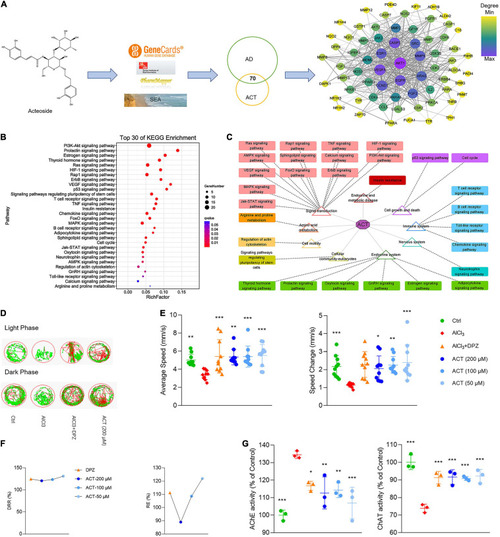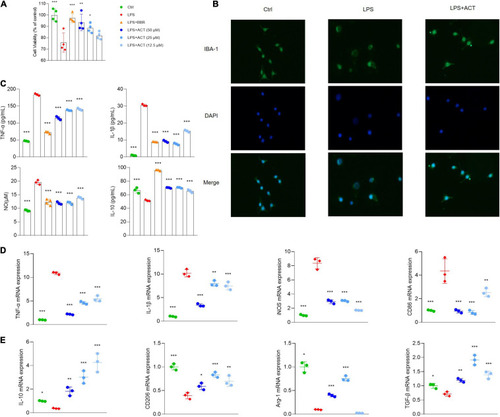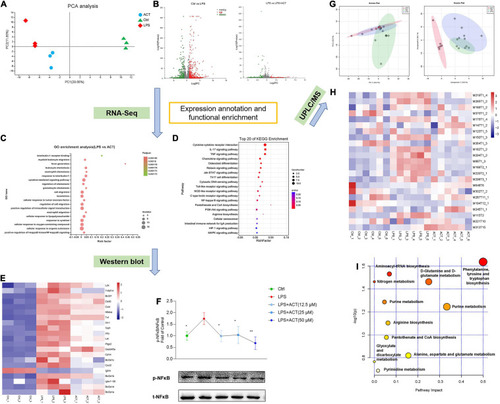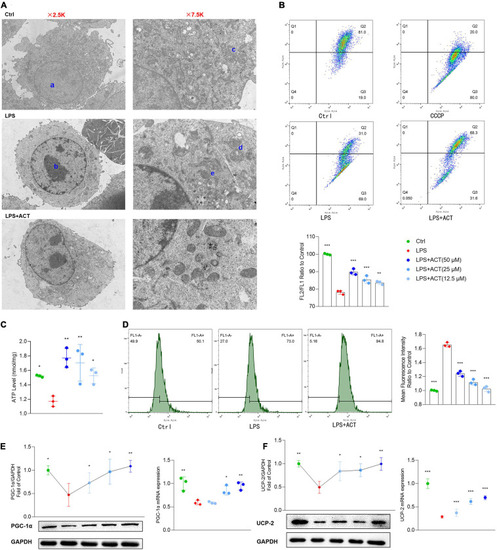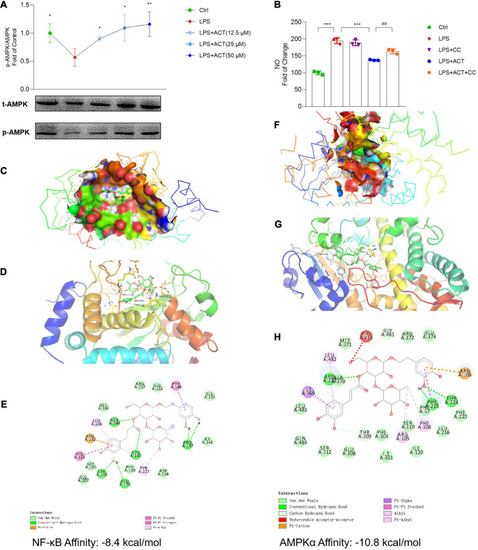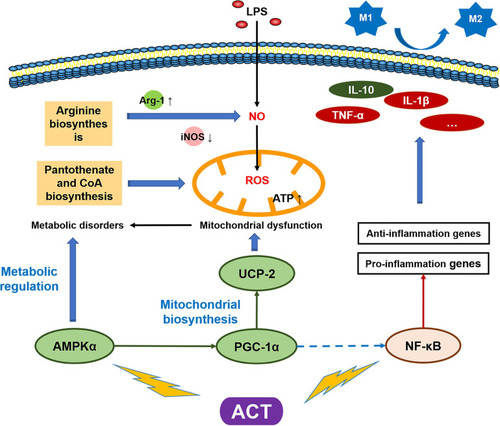- Title
-
An Inhibitor of NF-κB and an Agonist of AMPK: Network Prediction and Multi-Omics Integration to Derive Signaling Pathways for Acteoside Against Alzheimer's Disease
- Authors
- Li, Y.Q., Chen, Y., Jiang, S.Q., Shi, Y.Y., Jiang, X.L., Wu, S.S., Zhou, P., Wang, H.Y., Li, P., Li, F.
- Source
- Full text @ Front Cell Dev Biol
|
ACT attenuated AlCl3-induced AD in zebrafish larvae. |
|
ACT regulated M1/M2 polarization in LPS-stimulated BV-2 cells. |
|
ACT regulated M1/M2 polarization |
|
Effects of ACT on mitochondrial function in LPS-treated BV-2 cells. |
|
ACT bond to and inhibited NF-κB as well as activated AMPKα. |
|
Schematic model of the mechanism by which ACT suppresses LPS-induced M1 polarization |

